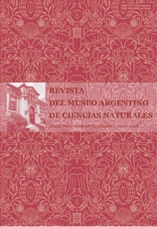Aspectos de la dinámica de la vegetación de un ambiente de la costa del río de la Plata: patrones fenológicos y evolución del contenido de clorofila
Resumen
Aspects of the vegetation dynamics of a coastal environment of the Rio de la Plata: phenological
patterns and evolution of chlorophyll content. The coast of Buenos Aires City and its surroundings
have been modified by work of refilling, giving place to the creation of areas colonized by vegetation of continental
origin, as well as by species transported by the rivers Paraná and Uruguay. Given that these areas result from
the biotic response to human-induced conditions, they may be considered “novel ecosystems”. Even though information
is available with regards to their structure, no studies have been performed on their dynamics. In the
present work, changes of foliar phenology and chlorophyll content were studied during a whole year in twelve
representative species of different biotypes at a Tipuana tipu wood, growing on landfills. Data were analyzed with
multivariate statistical methods. The analysis of leaf phenophases revealed two main strategies of developmental
complementarity: in evergreen species, groups were characterized by differences in the relative abundance of the
different phenofases across the year; while in deciduous species groups differed on either the period where certain
phenofases peacked , and/or on their relative duration. The analysis chlorophyll content revealed five groups of
species according to the time period when their foliage was photosynthetically active, and allowed us to characterize
the months of maximum productivity in the system.
patterns and evolution of chlorophyll content. The coast of Buenos Aires City and its surroundings
have been modified by work of refilling, giving place to the creation of areas colonized by vegetation of continental
origin, as well as by species transported by the rivers Paraná and Uruguay. Given that these areas result from
the biotic response to human-induced conditions, they may be considered “novel ecosystems”. Even though information
is available with regards to their structure, no studies have been performed on their dynamics. In the
present work, changes of foliar phenology and chlorophyll content were studied during a whole year in twelve
representative species of different biotypes at a Tipuana tipu wood, growing on landfills. Data were analyzed with
multivariate statistical methods. The analysis of leaf phenophases revealed two main strategies of developmental
complementarity: in evergreen species, groups were characterized by differences in the relative abundance of the
different phenofases across the year; while in deciduous species groups differed on either the period where certain
phenofases peacked , and/or on their relative duration. The analysis chlorophyll content revealed five groups of
species according to the time period when their foliage was photosynthetically active, and allowed us to characterize
the months of maximum productivity in the system.
Texto completo:
PDFEnlaces refback
- No hay ningún enlace refback.

This work is licensed under a Creative Commons Attribution 3.0 License.

